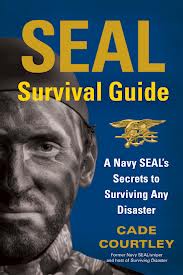AIRPLANE CRASH:
It is estimated that about two million people worldwide travel by plane each year (Courtley, 2012). Airplanes are widely considered the safest way to travel, although they do occasionally go down. In SEAL Survival Guide, Courtley addresses two main threats you face on an airplane. Aside from hijacking/terrorism, we face the impact of the plane against something, and post-impact conditions which often include fires, fuel combustion and smoke inhalation. Courtley talks about how a crucial part of a SEALs success on a mission is the uniform and gear they wear and use. This generalizes to us. Choices are made based on level of functionality. We should ask ourselves daily- are we dressed to handle an emergency?
CLOTHING:
In the case of airplane travel, it is best to wear long pants and long sleeved shirts, made of less flammable materials (wool, polyester, nylon). Long sleeved shirts/pants will serve as a layer of protection for your skin (Courtley, 2012). You should avoid open-toed shoes or high heels. This is due to the fact that in an emergency situation you may need to climb or maneuver your way through wreckage or debris. Lastly, you should carry a handkerchief or some type of cloth material that you can use to cover your mouth with in case of a smoke or noxious-fume event.
WHERE TO SIT:
You should prepare for an emergency as early as when you’re booking your flight. Statistics of airline crashes compiled by the Federal Aviation Administration show that the greatest number of survivors are among those who were sitting towards the back of the aircraft (Courtley, 2012). As you may think, seats closer to the exit doors are preferable. If you survive the initial impact, it is most desirable to be in a position that allows you to get out of the aircraft as quickly as possible.
GATHERING INTELLIGENCE:
We often check ratings of hotels, restaurants, gas stations, and basically anything else you can give a rating on, so why not gather intelligence on the aircraft you will be taking? It is important to research the safety record of the plane you are going to take. You can check the mechanical data and safety records of any plane, and I think that many people (myself included until reading the book) are unaware of this. The Federal Aviation Administration maintains incident reports for all aircraft. By knowing the aircraft identification or “N” numbers, which are found near the tail of the plane, you are able to access this information (Courtley, 2012).
IMPACT:
Under this circumstance, there may not be much you can do. What you can and should do is stay alert, especially during takeoff and landing, keep your seat belt on, and brace yourself. There are two main brace positions:
- CROSS-ARM BRACE POSITION includes grabbing the back of the seat in front of you with one hand, then crossing the other over the first to also grab the back of the seat. Then, you should place your head in the compacted triangle you have created (Courtley, 2012).
- BEND-AND-TUCK BRACE POSITION includes leaning forward and placing your chest into your thighs. You should put your head between your knees and reach down with your hands to grab each opposite ankle. Your feet should remain flat on the floor for both methods.
GETTING OUT:
Once you have survived the impact, time is of the essence. If there is no fire or smoke, you may have no more than two minutes to save your life. The closest exit may be blocked. Exit doors are usually placed in tandem, opposite each other, so if you notice one is dangerous you can cross over to the other side and check that one. It is important to keep moving, do not pause or sit at the edge of the door and wait for anything. After getting out of the plane, it is important to keep moving. If you’ve crash landed in water, you should get as far away from the plane as possible because a secondary explosion may be likely. If your crash landing was a remote area, you should remain in the vicinity of the plane because that is where rescuers will check first (Courtley, 2012).
References:
Courtley, C. (2012). SEAL Survival Guide. New York, NY: Gallery Books
